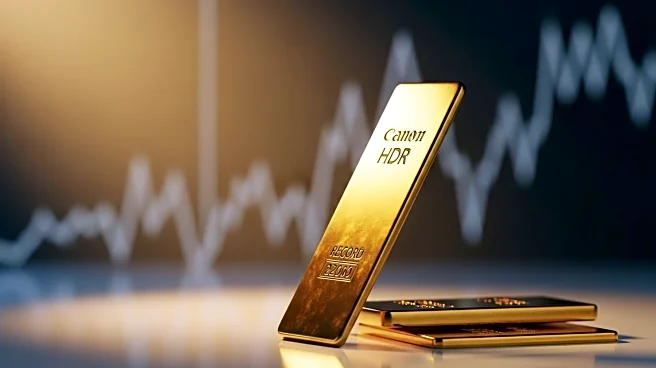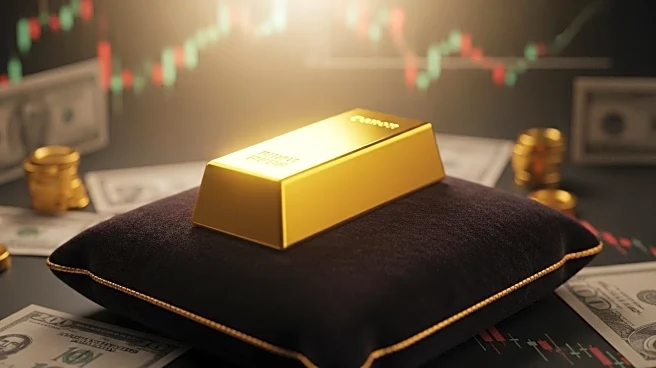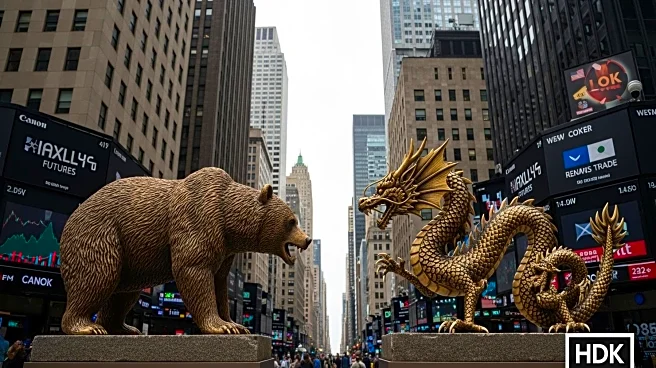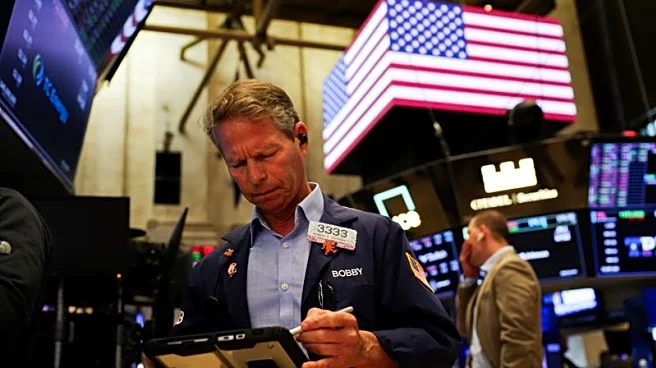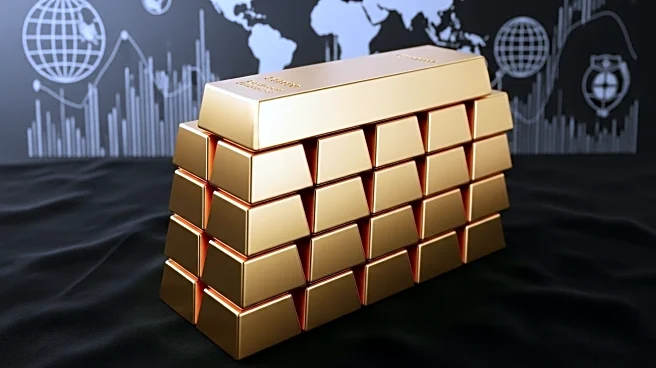What's Happening?
Gold prices have surged to an unprecedented high, exceeding $4,100 per ounce, driven by heightened demand for safe-haven assets amid escalating U.S.-China trade tensions and expectations of further Federal Reserve rate cuts. The spot gold price increased by 2% to $4,103.05 per ounce, while gold futures on the COMEX division of the New York Mercantile Exchange rose nearly 2.9% to $4,124.30. This surge reflects a year-to-date rally of over 54%, underscoring gold's robust momentum amid geopolitical and economic uncertainties. The recent trade friction between Washington and Beijing has intensified fears of a trade war, directly contributing to the latest breakout in gold prices. Additionally, the Federal Reserve's rate-cutting cycle, which began in August, has bolstered gold's appeal, with markets anticipating a 97% probability of a 25-basis-point cut at the Fed's upcoming meeting and a 100% chance of a third cut in December.
Why It's Important?
The rise in gold prices signifies a shift in investor sentiment towards safe-haven assets amidst global economic and political instability. This trend is further amplified by central banks' increased gold reserves, with a survey by the World Gold Council indicating that 95% of respondent central banks expect global gold reserves to expand over the next year. The ongoing diversification away from U.S. dollar assets by emerging market institutions is also contributing to this bullish narrative. Retail investment demand is strong, with global gold-backed ETFs experiencing net inflows for three consecutive months. Major financial institutions, including Société Générale and Bank of America, have upgraded their gold price forecasts, projecting that gold could reach $5,000 per ounce by 2026. This development highlights gold's role as a hedge against inflation and lower interest rates, reinforcing its long-term portfolio value.
What's Next?
The outlook for gold remains positive, with analysts predicting continued growth in its appeal as a store of value. Despite potential short-term technical corrections, the long-term trend is expected to remain upward, supported by declining real interest rates, scrutiny of the U.S. dollar's dominance, and ongoing geopolitical risks. Financial institutions are likely to continue adjusting their gold allocations, reflecting its increasing importance in diversified investment portfolios. As central banks persist in their gold purchasing strategies, the metal's price is anticipated to maintain its upward trajectory, potentially reaching new highs in the coming years.
Beyond the Headlines
The surge in gold prices may have broader implications for global economic stability and monetary policy. As central banks and investors increasingly turn to gold, the dynamics of currency reserves and international trade could shift, impacting global financial systems. The diversification away from U.S. dollar assets may also influence currency exchange rates and international economic relations. Additionally, the growing reliance on gold as a hedge against inflation and economic uncertainty could lead to changes in investment strategies and financial market behaviors.


